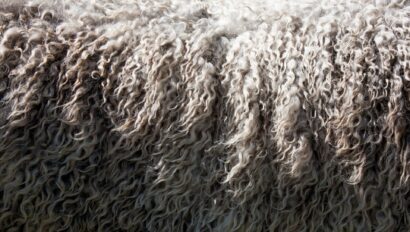2019 Preferred Fiber & Materials Report
Report shows global fiber production at an all-time high and features the industry’s move towards preferred fibers and materials.
Textile Exchange’s Preferred Fiber and Materials Market Report (PFMR) measures the production of fiber and materials with improved social and environmental impacts – known as Preferred. This in-depth report focuses on the industry’s supply side, analyzing production volumes, availability and emerging fiber trends.
The Preferred Fiber and Materials Market Report 2019 reveals that global fiber production has doubled in the last 20 years, reaching an all-time high of 107 million metric tons in 2018 and is expected to grow to 145 million metric tons by 2030 if business-as-usual continues. Included in this production increase from the 2018 reporting year are more responsible – or preferred – options for almost all fiber categories, however the volumes are still quite low in comparison to the conventional counterparts.
The Preferred Fiber and Materials Market Report focuses on data in various fiber categories, including Plant-based Natural Fibers, Animal-based Fibers and Materials, Manmade Cellulosic Fibers, Synthetic Fibers, as well as takes a look at sustainability standards, initiatives, and trends.
This year, Textile Exchange has, for the first time, made more detailed supplier mapping information available as an accompaniment to the PFMR. This resource is accessible only by Supporter and Partner level members of Textile Exchange, who can access it via the organization’s Hub.
Key findings include:
In the Plant-based Natural Fibers category, cotton is the most used fiber. Preferred cotton had a market share of 22% of the total global cotton productionand was grown in 30 countries in the 2018 reporting year. Preferred cotton programs include: ABRAPA, BASF e3, Better Cotton Initiative (BCI), Cleaner Cotton, Cotton made in Africa (CmiA), Fairtrade, Fairtrade Organic, Field to Market, ISCC, myBMP, Organic, REEL Cotton, Regenerative Cotton and Transitional Cotton.
With the United States Farm Bill, 2018 was also an important year for hemp. See page 7 to 22 of the report for more information about plant-based natural fibers, including cotton, hemp, flax, and more.
Due to concerns about the treatment of animals for textile and apparel use, animal welfare standards and initiatives are in place to define responsible practices and provide assurance that specific criteria are being delivered on in the Animal-based Fibers and Materials category.
In 2018, preferred down was produced on thousands of farms in 13 countries. Preferred down is recognized through the adherence to standards, including Textile Exchange’s Responsible Down Standard (RDS) that was developed in 2014, the Global Traceable Down Standard (TDS), and Downpass.
Wool is the most used animal-based fiber, with more than one million metric-tons produced globally. Preferred wool is estimated to be below 3% of the global market share. Preferred wool is identified by key standards and initiatives, including Textile Exchange’s Responsible Wool Standard (RWS). The RWS was launched in 2016 and covered sheep on 278 farms in 6 countries during 2018.
2018 was also a significant year for mohair as Textile Exchange began the development of a Responsible Mohair Standard (RMS) that will sit alongside the RWS and provide assurance that mohair comes from farms with high animal welfare and progressive land management practices.
Additionally, Textile Exchange is continuing its work on the Responsible Leather Round Table and a newly assembled Responsible Cashmere Round Table. See page 23 to 45 of the report to review more data about these and more animal-based fibers and materials.
Manmade Cellulosic Fibers category (MMCFs), are increasing steadily with a market share of approximately 6.2% of total fiber production volume, which is double what it was in 1990 and is expected to continue growing. MMCFs include viscose, acetate, lyocell, modal, and cupro. See page 47 to 65 of the report for more information.
In the Synthetic Fiber Category for 2018, polyester was reported to have a market share of around 52 percent of the global fiber production, making it the most widely used fiber worldwide.
In an effort to accelerate the industry’s use of preferred fibers, Textile Exchange initiated a commitment to recycled polyester, one type of preferred polyester, that encouraged brands and retailers to publicly commit to increasing their use of recycled polyester by 25 percent by 2020. This goal was achieved in 2018 – two years early! This momentum is exciting and hopefully will not be deterred by the 2018 recycled polyester market share being approximately 3% lower when compared to the 16% in the previous year due to the ban on importing different types of solid waste, including plastic bottles and polyester textile waste, to China that went into effect January 2018. See page 58 to 70 of the report to review full details about these fibers and more.
The continued growth of global fiber production will have significant impacts on people and planet. Now is the time to accelerateatransition to preferred fiber and materials – this is a critical step to reducing the footprint on the planet that is being left by conventional fiber and material production. Textile Exchange aims to be the driving force for urgent climate action with a goal of 35-45% reduced CO2 emissions from textile fiber and material production by 2030. Find out more about our 2030 Strategy: Climate+.
ABOUT TEXTILE EXCHANGE
Textile Exchange is a global nonprofit that creates leaders in the sustainable fiber and materials industry. The organization manages and promotes a suite of six leading industry standards, as well as, collects and publishes critical industry data and insights that enable brands and retailers to measure, manage and track their use of preferred fiber and materials.
With more than 400 members who represent leading brands, retailers and suppliers, Textile Exchange has, for years, been positively impacting climate through accelerating the use of preferred fibers across the global textile industry and is now making it an imperative goal through its 2030 Strategy: Climate+. Under the Climate+ strategic direction, Textile Exchange will be the driving force for urgent climate action with a goal of 35-45% reduced CO2 emissions from textile fiber and material production by 2030.
To learn more about Textile Exchange, visit: TextileExchange.org. Follow us on Twitter at @TextileExchange.


